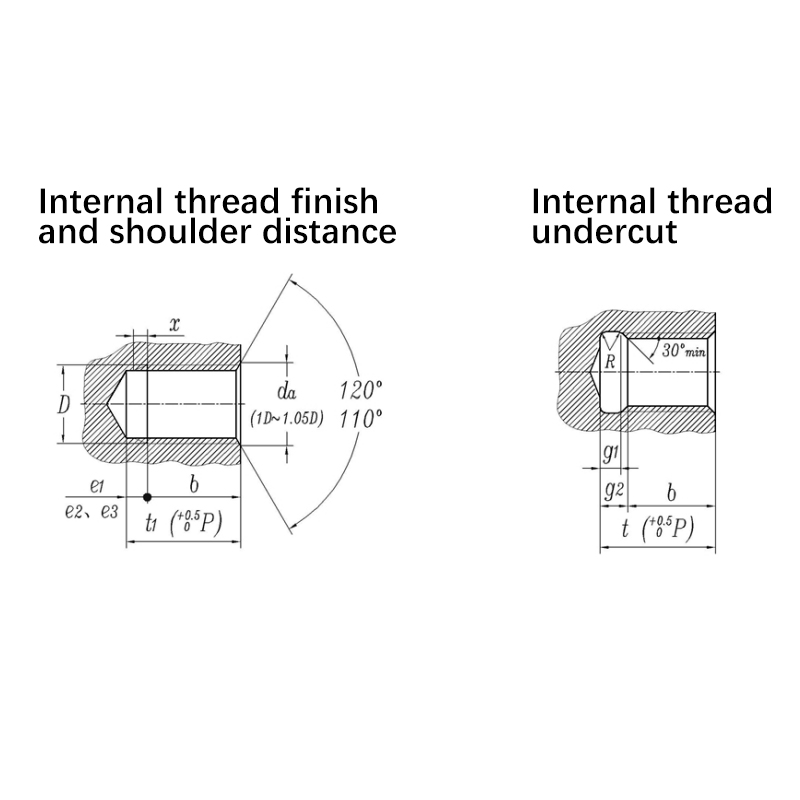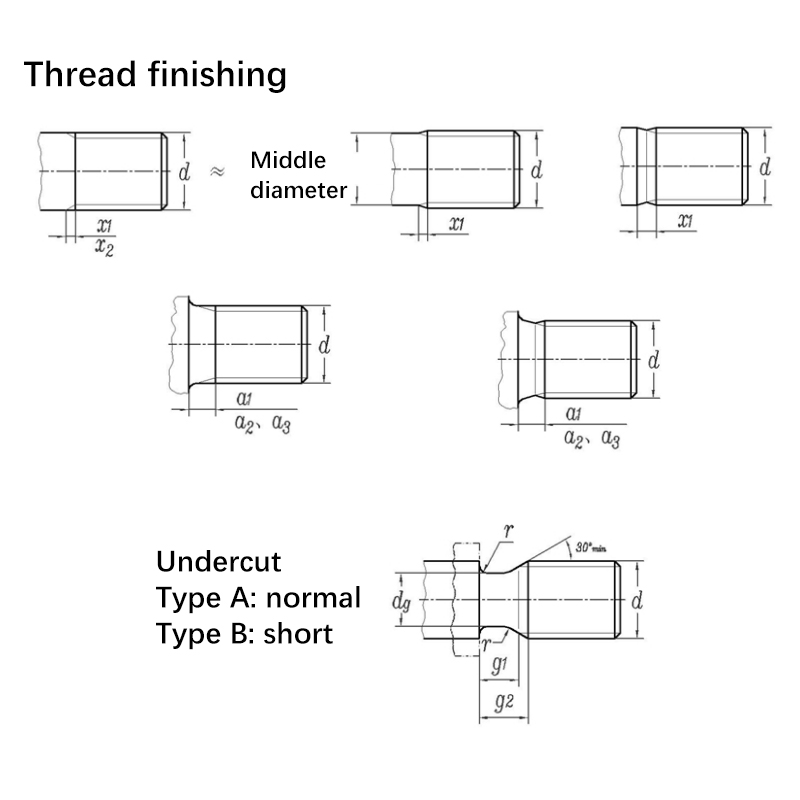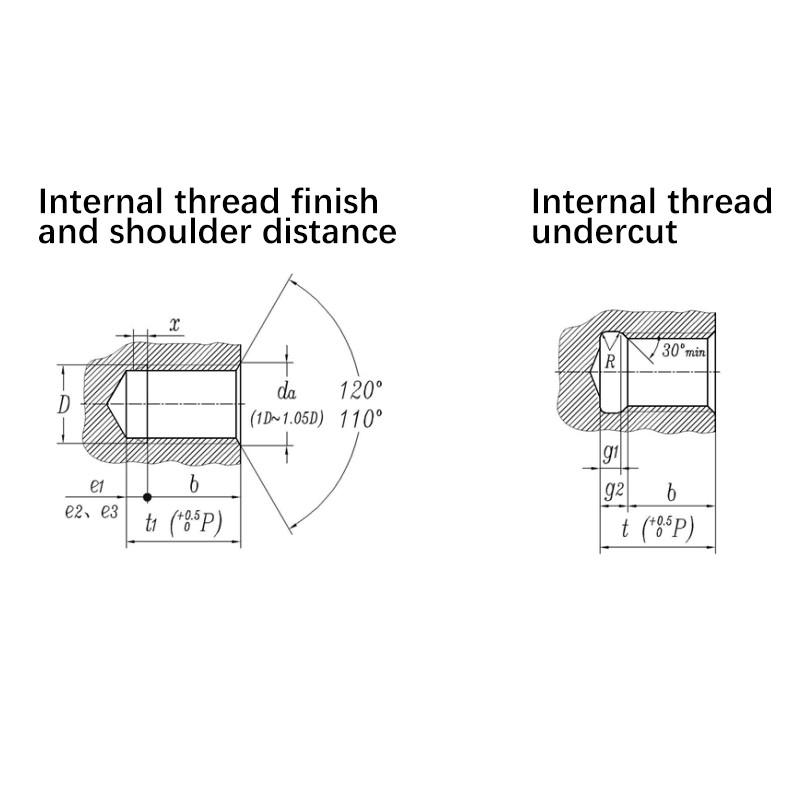Description
Undercut machining techniques involve specialized tools and methods to create recessed or overhanging features in components, enabling the production of complex geometries crucial for industries such as aerospace, automotive, and medical devices. From tools like dovetail and lollipop cutters to custom CNC solutions, these techniques facilitate intricate designs, weight reduction, and ergonomic features while ensuring structural integrity and functionality across diverse applications, including T-slot undercuts, internal thread reliefs, and precision-engineered components.
Specialized Tools for Undercuts
Specialized tools are essential for creating precise undercuts in machining processes. These tools include:
- • Dovetail cutters: Designed with angled cutting edges to create dovetail-shaped undercuts, typically available in 45° and 60° angles.
- • T-slot cutters: Featuring a vertical shaft and perpendicular cutting blade, these tools create T-shaped slots in two steps.
- • Lollipop cutters: Shaped like their namesake, these tools excel at producing spherical bottom undercuts and smooth finishes.
- • Undercutting end mills: Versatile tools with cutting edges on the sides and tip, available in various configurations for different undercut geometries.
These specialized tools enable machinists to access hard-to-reach areas and create complex undercut features that standard cutting tools cannot achieve.
Applications in Aerospace Components
Undercut machining plays a pivotal role in the aerospace industry, where precision and weight optimization are paramount. This technique is widely used to manufacture components such as turbine blades, brackets, and airframe structures. These parts often require material removal in intricate areas to reduce weight while maintaining structural integrity, which enhances fuel efficiency and overall performance.
Additionally, undercuts are essential for creating internal pathways for wiring or fluid systems in aerospace designs. For instance, recessed channels allow for the integration of hydraulic lines or electrical cables without compromising the aerodynamic profile or strength of the component. The ability to produce these complex features makes undercut machining indispensable in modern aerospace manufacturing.
Creating T-Slot Undercuts
T-slot undercuts are created through a two-step process using specialized tools. Initially, a standard end mill cutter forms a slot, followed by a T-slot cutter that creates the characteristic T-shape. The T-slot cutter features a vertical shaft (shank) with a perpendicular cutting blade, allowing for horizontal undercutting. These tools are available in widths ranging from 3 to 35mm and are often customized through CNC turning for specific job requirements. T-slot undercuts are widely used in fixtures, mounting slots, and machine table beds, providing secure attachment points for components and facilitating adjustable positioning in various industrial applications.
Undercut Milling Techniques
Undercut milling is a specialized technique in CNC machining that allows for the creation of complex geometries and features that are difficult or impossible to achieve with standard milling operations. This process is particularly useful for producing parts with overhanging or recessed features. Here are key aspects of undercut milling:
- • Utilizes specialized tools like lollipop cutters and dovetail milling cutters to access hard-to-reach areas.
- • Enables the creation of both internal and external undercuts, offering greater flexibility in part design.
- • Commonly used in aerospace for engine components and airframe structures requiring precise undercuts.
- • Essential in automotive manufacturing for producing engine parts and transmission components with complex geometries.
- • Employed in medical device fabrication for surgical instruments and implants with ergonomic designs.
- • Allows for weight reduction in parts without compromising structural integrity, crucial for aerospace and automotive applications.
- • Requires careful consideration of tool selection, cutting parameters, and machine capabilities to achieve desired results.
Internal Thread Relief
Internal thread undercuts are crucial features in machining that enhance the functionality and performance of threaded components. These specialized undercuts are typically found at the end of internal threads, serving several important purposes:

- • Stress relief: Internal thread undercuts reduce stress concentration at the thread's end, preventing crack formation and improving fatigue resistance.
- • Thread run-out: They provide space for the threading tool to complete the thread without interference, ensuring full thread engagement.
- • Assembly clearance: Undercuts create room for fasteners to seat properly, allowing for flush mounting of mating parts.
- • Chip evacuation: The additional space aids in removing metal chips during the threading process, improving overall thread quality.
- • Standardization: Many internal thread undercuts follow specific standards, such as DIN 509, which defines dimensions for various undercut types.

When machining internal thread undercuts, precision is key. The undercut should typically be at least 1.5 threads long and have a diameter approximately 0.015 inches (0.38 mm) smaller than the thread's minor diameter. This careful dimensioning ensures optimal performance while maintaining the structural integrity of the threaded component.
Custom Undercut CNC Solutions
Custom undercut CNC parts offer unique solutions for complex design requirements across various industries. These specialized components leverage advanced machining techniques to create features that are otherwise difficult or impossible to achieve with standard manufacturing methods.
- • Aerospace: Custom undercut parts are used in lightweight structural components, allowing for intricate internal geometries that reduce mass while maintaining strength.
- • Automotive: Engine blocks and transmission housings often require custom undercuts for oil passages and coolant channels.
- • Medical devices: Implants and surgical instruments benefit from custom undercuts to improve ergonomics and functionality.
- •
- • Consumer electronics: Undercuts enable the creation of snap-fit assemblies and compact designs in smartphones and laptops.
- • Industrial machinery: Custom undercut features are crucial for creating precise fitting components in hydraulic manifolds and robotic arms.
- • Precision instruments: Scientific and measurement devices often require custom undercuts for sensor housings and calibration mechanisms.
When designing custom undercut CNC parts, engineers must consider factors such as material selection, tool accessibility, and manufacturing costs to ensure optimal performance and production efficiency.






